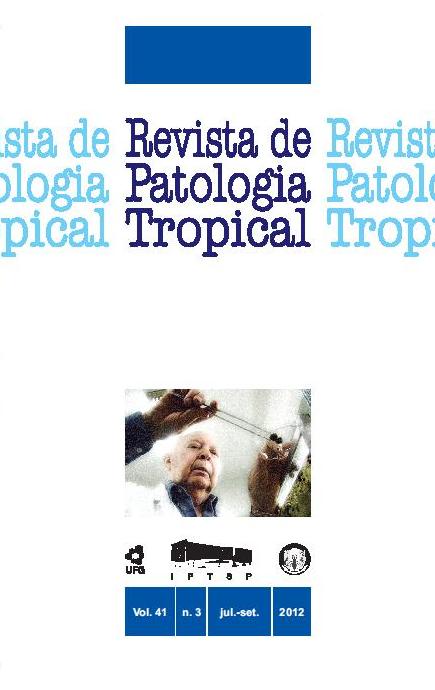Sand flies (Diptera: Psychodidae) Associated with Domestic Animal Shelters in a Rural Area of Northestern Maranhão, Brazil
DOI:
https://doi.org/10.5216/rpt.v41i3.20748Keywords:
Lutzomyia, Leishmaniasis, Peridomicile.Abstract
In the rural zone of the municipality of Chapadinha, Northeastern Maranhão, the domestic animal shelters are common and next to the dwellings and to Forest environments and the widespread cattle raising changes the local vegetation, yielding conditions to the domiciliation process of sand flies found in the forested environments. The objective of this study was to know the association between sand flies and animal shelters in rural area of Maranhão state. The insects were sampled
monthly from January to December 2010, between 18:00 and 06:00, with CDC light traps, set in peridomiciliary environments (corral, chicken roost and pigsty), one trap in each of the three shelters. A total of 1,190 individuals and 10 species were registered, where the most frequent were Lutzomyia evandroi (90.6%; n = 1,078), L. termitophila (2.8%; n = 33), L. longipalpis (2.4%; n = 29) and L. whitmani (2.4%; n = 28). The chicken roost was the most represented shelter in number of individuals (88%). Lutzomyia evandroi was the most frequent species in the chicken roost (94.8%). In the corral, the most common species were L. evandroi (57.1%), L. longipalpis (23.1%) and L. whitmani (11%). The most captured species in the pigsty was L. evandroi (63.5%). In general, sand flies did not show any preference by animal shelter, with exception to L. longipalpis which was more sampled in the corral and not found in the pigsty.
Downloads
Downloads
How to Cite
Issue
Section
License
The manuscript submission must be accompanied by a letter signed by all authors stating the full name and email address, confirming that the material has not been published or is under consideration for publication elsewhere, and agreeing to transfer copyright in all media and formats for Journal of Tropical Pathology. The authors will not be paid for published articles. They are solely responsible for the content of those articles, even if the Editor holds the right to adjust them to the norms of the journal.
The reviewers will not be paid for the peer review process.

